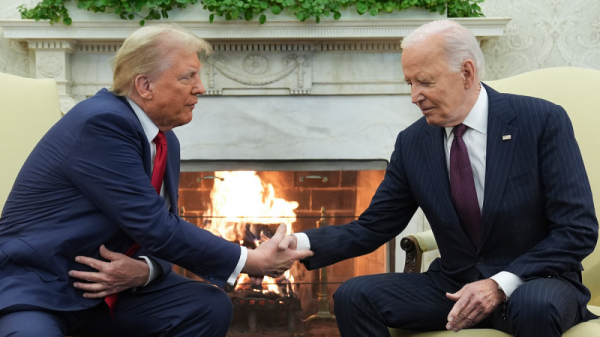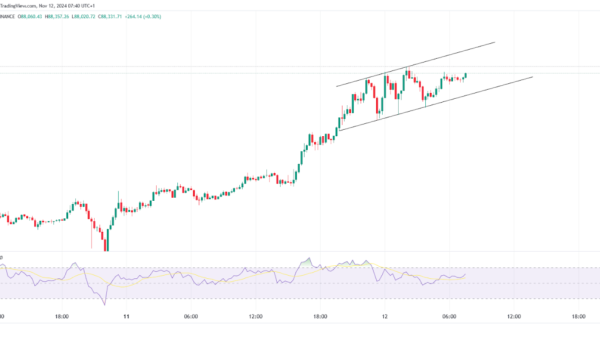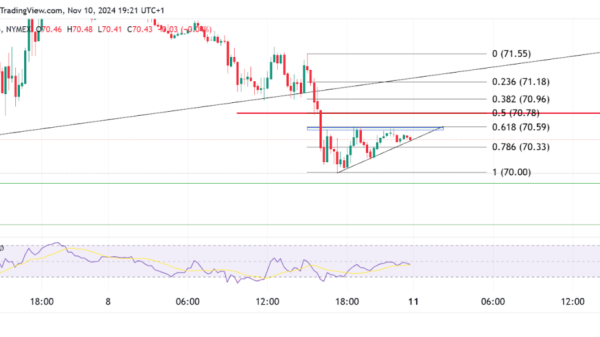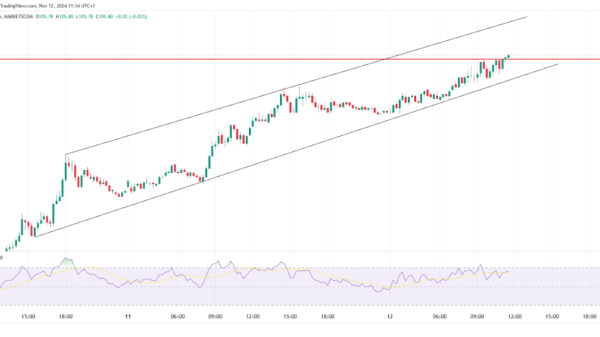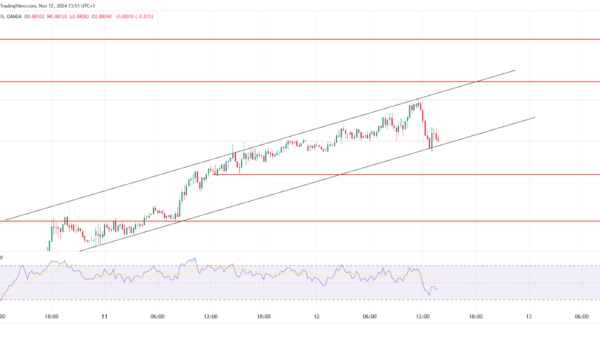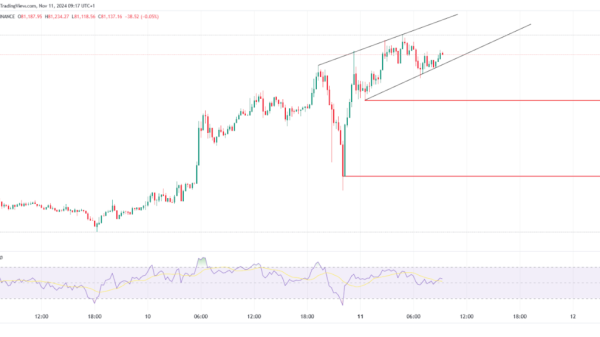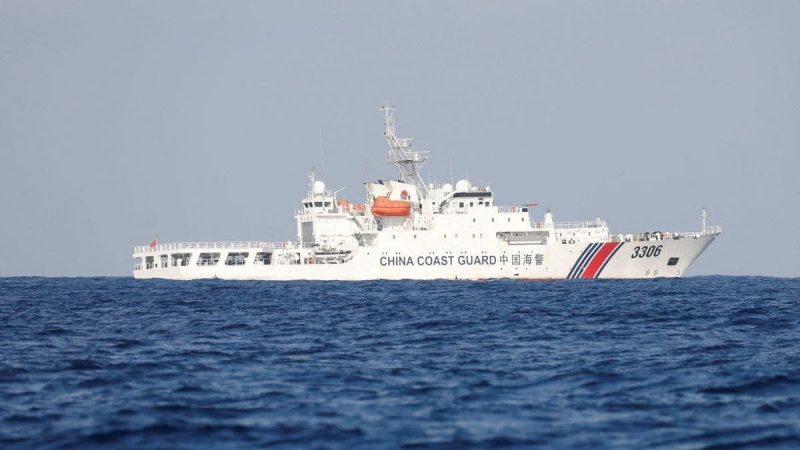House lawmakers were briefed Wednesday about the potential outcome if the U.S. were to find itself at war with China over Taiwan within the next two years, as the global superpower increasingly encroaches on U.S. allies.
The Chinese defense industrial base is operating at a ‘wartime footing,’ and now has a shipbuilding capacity 230 times greater than the U.S.’s, making a potential invasion of Taiwan a not-unlikely outcome.
U.S. military analysts have projected 2027 as the year by which China would be fully equipped for a military invasion of Taiwan. And the U.S. has long followed a policy of refusing to say whether it would come to the island’s defense under such a scenario.
But under war exercises gamed out by the Center for Strategic and International Studies (CSIS) 25 times and presented to members of the House China Select Committee, the alliance of the U.S., Taiwan and Japan defeated an amphibious invasion by China and maintained an autonomous Taiwan, but not without suffering heavy losses.
During the simulation, the cost for all sides was high – there were more than 10,000 casualties – and the U.S. lost 10-20 warships, two aircraft carriers, 200-400 warplanes and more than 3,000 troops were killed over the first three weeks of fighting.
China loses 90% of its amphibious fleet, 52 major surface warships, and 160 warplanes.
‘In our tabletop exercise today, we walked through one simulation of what might happen in a worst-case scenario conflict with China and learned ways we can work together in a bipartisan manner to ensure that America is prepared to be the arsenal of democracy once more if called upon. No matter where or when, the United States and our allies must have the military means to defeat our adversaries,’ Rep. John Moolenaar, R-Mich., chairman of the committee, told Fox News Digital.
The report emphasized four key points: 1) Taiwan must ‘hold the line’ of the ground invasion, 2) there is no ‘Ukraine’ model where the U.S. can slowly escalate – it must decide immediately whether it will come to Taiwan’s defense, 3) military operations would need to be conducted through Japan and 4) the U.S. needs to immediately increase its supply of anti-ship missiles.
The bottom line of the report is that China chooses ‘D-Day,’ but Taiwan and its defenders must be ready at any moment. The war game assumed a 2026 launch date for China’s invasion.
The scenario operates under the assumption that the U.S. under President-elect Trump would come to Taiwan’s defense, though no such promise has been made. It’s unclear what Trump would do under such a scenario – he has mused about Taiwan needing to pay the U.S. for giving it defensive aid.
Japan would be the U.S. and Taiwan’s key ally in such a fight because South Korea has not authorized the U.S. to launch combat missions from its territory. CSIS recommends deepening U.S.-Japan diplomatic relations immediately.
‘It certainly would be very helpful if South Korea stood shoulder-to-shoulder with us,’ said Matthew Cancian, researcher at the Naval War College and lead author of the project. The U.S. would likely move two of the four squadrons it has stationed in South Korea to help with the fight against China over Taiwan.
But, as the presenters warned, North Korea may try to take advantage of the situation and invade the south, especially after gaining operational experience from their fight with Russia against Ukraine.
The exercise also claimed that unlike U.S. aid to Ukraine, which passes over NATO territory to arrive there, the U.S. would not be able to arm Taiwan without sending in U.S. forces – China’s anti-tank or anti-air missiles would threaten any shipments making their way to the island.
‘U.S. forces would have to be directly involved,’ said Cancian. ‘There is no way to achieve denying a takeover of Taiwan while also keeping U.S. forces safe.’
And if the U.S. were to come to Taiwan’s defense, there would be no time to waste since China is much closer geographically than U.S. forces. ‘If the U.S. were not to join the fight for two weeks [after an invasion], it would be too late. Chian would already have too strong a footing,’ said Cancian.
Chinese land attack missiles and anti-ship missiles would pose the greatest threat in the theater. Harpoons and coastal defense cruise missiles would be ‘absolutely critical’ to Taiwan’s defense, according to the wargame exercise.
China is outproducing the U.S. on airplanes, ships and missiles, the exercise found, and in order to deter them from provoking war over Taiwan, the U.S. needs to immediately ramp up its production of key munitions, per the war games.
The U.S.’s current stockpile of anti-ship missiles, around 440, would run out in less than seven days in a war with China.
China would not be keen to give up easily, as a loss in Taiwan could be ‘very destabilizing’ to the government’s legitimacy back at home.
The war games also underscored the need for the Taiwanese defense budget to stop focusing on expensive, large ships that China will easily destroy and focus on smaller, more survivable ships and submarines.
The U.S., too, must focus on arming Taiwan with smaller ships and cheaper munitions, with most iterations of the war games finding the U.S. losing two aircraft carriers and 10 to 20 large surface combatants.
‘We need to make them fire their exquisite stuff at our non-exquisite stuff,’ said Rep. Carlos Gimenez, R-Fla. ‘They’re going to out-produce us… we need to wake up.’
The U.S. and Taiwan must not attack the Chinese mainland, both to avoid risking escalation with a nuclear power and because Chinese air defense on the mainland is ‘too strong.’
Ultimately, such an invasion could happen sooner, or not at all.
The U.S. Indo-Pacific Command (INDOPACOM) head, Adm. Samuel Paparo, said recently he believes the U.S. would make it ‘exceedingly difficult’ for China to mount a cross-strait invasion.
For years, the U.S. military has been pivoting its focus from the Middle East to the Indo-Pacific, ‘the most stressing theater,’ as Paparo describes it, given that China is the most capable potential adversary in the world.
According to Chinese policy, the CCP will invade only if Taiwan declares its independence from China, if a third power intervenes in the dispute or Beijing determines that ‘unification was irrevocably beyond its reach by any other means.’
While the U.S. has no formal alliance with Taiwan, China has been encroaching on the air and sea territory of U.S. allies in the Pacific – Japan and the Philippines.
Paparo said he’d seen ‘the most rehearsal and the most joint exercises’ from China over the summer that ‘I’d seen over an entire career of being an observer.’
‘This included on one particular day 152 vessels at sea,’ Paparo added.
China’s navy is the largest in the world, with more than 370 ships and submarines. The U.S.’s battle force includes 295 vessels, including 11 active aircraft carriers.
‘This was the largest rehearsal we’ve seen on an upward trajectory of PLA [People’s Liberation Army] modernization,’ Paparo said, referring to the Chinese military’s name.

